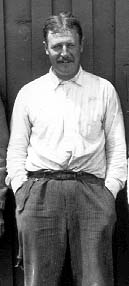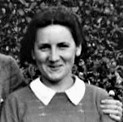Related Research Articles

Newgrange is a prehistoric monument in County Meath in Ireland, located on a rise overlooking the River Boyne, eight kilometres west of the town of Drogheda. It is an exceptionally grand passage tomb built during the Neolithic Period, around 3200 BC, making it older than Stonehenge and the Egyptian pyramids. Newgrange is the main monument in the Brú na Bóinne complex, a World Heritage Site that also includes the passage tombs of Knowth and Dowth, as well as other henges, burial mounds and standing stones.

The court cairn or court tomb is a megalithic type of chambered cairn or gallery grave. During the period, 3900–3500 BC, more than 390 court cairns were built in Ireland and over 100 in southwest Scotland. The Neolithic monuments are identified by an uncovered courtyard connected to one or more roofed and partitioned burial chambers. Many monuments were built in multiple phases in both Ireland and Scotland and later re-used in the Early Bronze Age.
Gerhard Bersu was a German archaeologist who excavated widely across Europe. He was forced into exile from Germany in 1937 due to anti-Semitic laws in pre-war Nazi Germany. He was interned on the Isle of Man during World War II where he made several significant archaeological discoveries such as the Viking boat burial at Balladoole.

Dorothy Annie Elizabeth Garrod, CBE, FBA was an English archaeologist who specialised in the Palaeolithic period. She held the position of Disney Professor of Archaeology at the University of Cambridge from 1939 to 1952, and was the first woman to hold a chair at either Oxford or Cambridge.
Ivor Noël Hume, OBE was a British-born archaeologist who did research in the United States. A former director of Colonial Williamsburg’s archaeological research program and the author of more than 20 books, he was heralded by his peers as the "father of historical archaeology".
Below are notable events in archaeology that occurred in 1838.
1828 in archaeology
Below are notable events in archaeology that occurred in 1882.
This page lists major events of 2001 in archaeology.
Below are notable events in archaeology that occurred in 1885.
Below are notable events in archaeology that occurred in 1868.

Alfred Vincent Kidder was an American archaeologist considered the foremost of the southwestern United States and Mesoamerica during the first half of the 20th century. He saw a disciplined system of archaeological techniques as a means to extend the principles of anthropology into the prehistoric past and so was the originator of the first comprehensive, systematic approach to North American archaeology.
The year 1982 in archaeology involved some significant events.

Sir Max Edgar Lucien Mallowan, was a prominent British archaeologist and academic, specializing in the Ancient Near East. Having studied classics at Oxford University, he was trained for archaeology by Leonard Woolley at Ur and Reginald Campbell Thompson at Nineveh. He then directed a number of archaeological expeditions sponsored by the British Museum and the British School of Archaeology in Iraq. He was the second husband of Agatha Christie, having met her during the excavation at Ur in 1930. He served in the Royal Air Force Volunteer Reserve during the Second World War, and then entered academia. He was Professor of Western Asiatic Archaeology at the University of London (1947–1962) and a fellow of All Souls College, Oxford (1962–1971).
Paul Sidney Martin was an American anthropologist and archaeologist. A lifelong associate of the Field Museum of Natural History in Chicago, Martin studied pre-Columbian cultures of the Southwestern United States. He excavated more than a hundred archaeological sites, starting with the groundbreaking seven-season expedition to the Montezuma County, Colorado in 1930–1938. His research passed through three distinct stages: field archaeology of the Anasazi Pueblo cultures of Colorado in the 1930s, studies of the Mogollon culture in 1939–1955 and the New Archaeology studies in 1956–1972. Martin collected more than 585 thousand archaeological artifacts although his own methods of handling these relics were at times destructive and unacceptable even by the standards of his time.

Michael Joseph "Brian" O'Kelly was an Irish archaeologist who led the excavation and restoration of Newgrange, a major Neolithic passage tomb in the Boyne Valley, County Meath, Ireland, now a UNESCO World Heritage Site.
This page lists major archaeological events of 2016.

Claire O'Kelly was an Irish archaeologist, notable as the first person to write up an accessible account of Irish archaeological sites. She was key to the realisation of the importance of the solstice connection of the Newgrange structure, and the first person to create a full collection of drawings of the decorated stones of Newgrange.
Seán Pádraig Ó Ríordáin was an Irish archaeologist who specialised primarily in the study of the prehistory and early medieval history of Ireland. He was one of the preeminent Irish archaeologists of the early 20th century, and was noted for his excavations at Lough Gur, County Limerick, and for his innovations in archaeological fieldwork. He served as Professor of Archaeology at University College Cork from 1936 until 1943, then as Professor of Celtic Archaeology at University College Dublin from 1943 until his death in 1957. As a professor, he influenced a generation of Irish archaeologists, notably Michael J. O'Kelly and Rúaidhrí de Valera.
References
- ↑ "Maria Rostworowski Obituary". theguardian.com. 6 April 2016. Retrieved 17 May 2017.
- ↑ O'Kelly, Michael J.; O'Kelly, Claire (6 April 1989). Early Ireland: An Introduction to Irish Prehistory. xi: Cambridge University Press. ISBN 9780521336871.
- ↑ "Claude-Joseph-Desire Charnay - French archaeologist". Encyclopedia Britannica. Retrieved 17 May 2017.